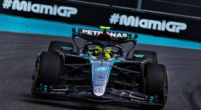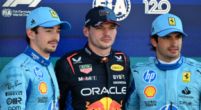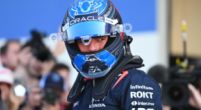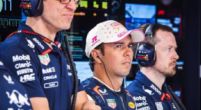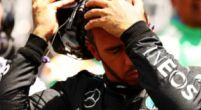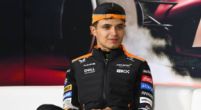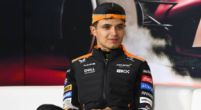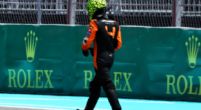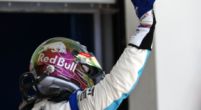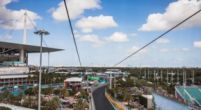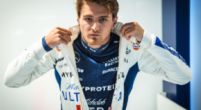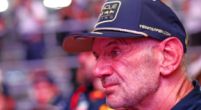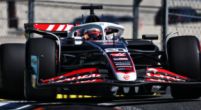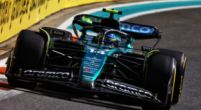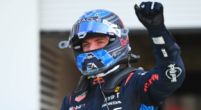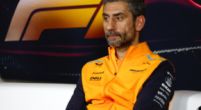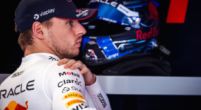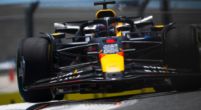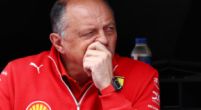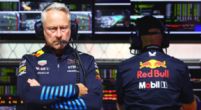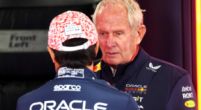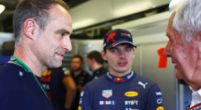Tech

F1 tech analysis: Did Red Bull struggle because of the technical directive?
After dominating the first 14 rounds of the season, Red Bull arrived in Singapore to keep up with their exceptional performance. Max Verstappen was looking to extend his own record of consecutive wins. However, the whole team had lower expectations than usual, knowing that their car would have struggled a little bit more on this track due to its bumpy nature and the high kerbs, even though they were confident that the layout changes would have helped them. Was this the case? Or was the newly introduced technical directive the cause of Red Bull's trouble?
In general, the RB19 is a car designed to run with very low ride height and stiff suspension, which is the key to producing a lot of downforce from the Venturi channel and therefore being fast in long high-speed corners.
For this reason, they knew this track wasn’t their best, so they decided to bring some changes that would help them generate downforce at low speeds and allow the car to be able to run at a higher ride height without losing balance and stability. On Thursday, it was already possible to notice a different rear wing with a cut in the endplate transition (yellow arrow); this solution has the main goal of reducing drag without losing the downforce but just makes the whole rear wing way more aero-efficient.
This could help on other types of tracks, like COTA or Qatar, where Red Bull can run this high downforce rear wing without losing too much in pure speed. However, this wasn’t the only change the team brought to Singapore. During Friday’s FP1 (which is not very useful because of the higher track temperature), Verstappen ran a re-designed floor edge section: the raised section has been lengthened and inclined further to create a second vortex generator, which can be useful for extracting the incoming flows from the Venturi channel. This first part is then followed by a long "knife" profile, which is useful for sealing the floor from external turbulence, ensuring that the airflow underneath the car is as undisturbed as possible to produce a lot of downforce and to help the extraction from the diffuser. This new floor-spec was said to help the RB19 run at a higher ride height to master the high-kerbs and bumps of the Singapore streets.


However, this new solution was set aside in Saturday’s FP3 when both drivers went back to the older configuration, which featured a single vortex generator and a shorter “raised section”. This seemed to be working, as the car behaviour on the kerbs and on the uneven asphalt surface was way better than Friday. Both drivers felt a bit better in the car, although still complained of a “pointy car and an unstable rear end”. This feeling got even worse in qualifying, as both Perez and Verstappen were out in Q2. Between FP3 and qualifying, the car was lowered, with consequent evidence of bottoming, especially during braking.
This caused a great deal of instability in the rear both when entering and exiting corners, causing the drivers to lack confidence in the car. As Sergio Perez confirmed after qualifying in a conversation with ViaPlay: “We don't understand as a team at the moment what's been going on, but it's been a very tricky qualifying, very tricky weekend up to now, and then my attempt in Q2 just made it worse. I had a massive lag getting back on the throttle and then a very big spike of delivery on the engine, and I couldn't control the car."
Red Bull’s CTO Adrian Newey was on the same wavelength when speaking to the same broadcaster: “It's a complicated question. As always, it's a lot of factors. Something we need to go away and understand. Primarily track related, but clearly, we haven't understood the nature of the track very well this year." Christian Horner also stressed throughout the weekend that TD018 wasn't the cause of the problem.
These words underline the fact that Red Bull's struggle was mainly caused by the nature of the track itself, more than by the newly introduced TD018 (also because this technical directive could be impactful on tracks where the aerodynamics are really important. Singapore is well known for being a stop-go circuit where aero has relatively very little influence).
Nevertheless, the race was a different scenario. We know that RB19 has usually been stronger in the race, and Verstappen would have managed to get on the podium if he had been luckier with the VSC and SC, as his pace on the mediums was very good and, as Marko confirmed to Auto Motor und Sport: "At the beginning, the higher weight of the petrol probably helped, but also in the last stint on mediums, we had the fastest cars in the field."
Suzuka should be a completely different challenge for the team, as the Japanese circuit is well known for its high-fast and long corners where the RB19 should excel, allowing Perez and Verstappen to come back to the top.
This article was created by Francesco Bianchi. Francesco is an Italian engineering student fond of drawing and F1's technical details. He has been studying engineering since 2021 and started watching Formula 1 in early 2016. Francesco enjoys learning the workings of every small part on the cars.

